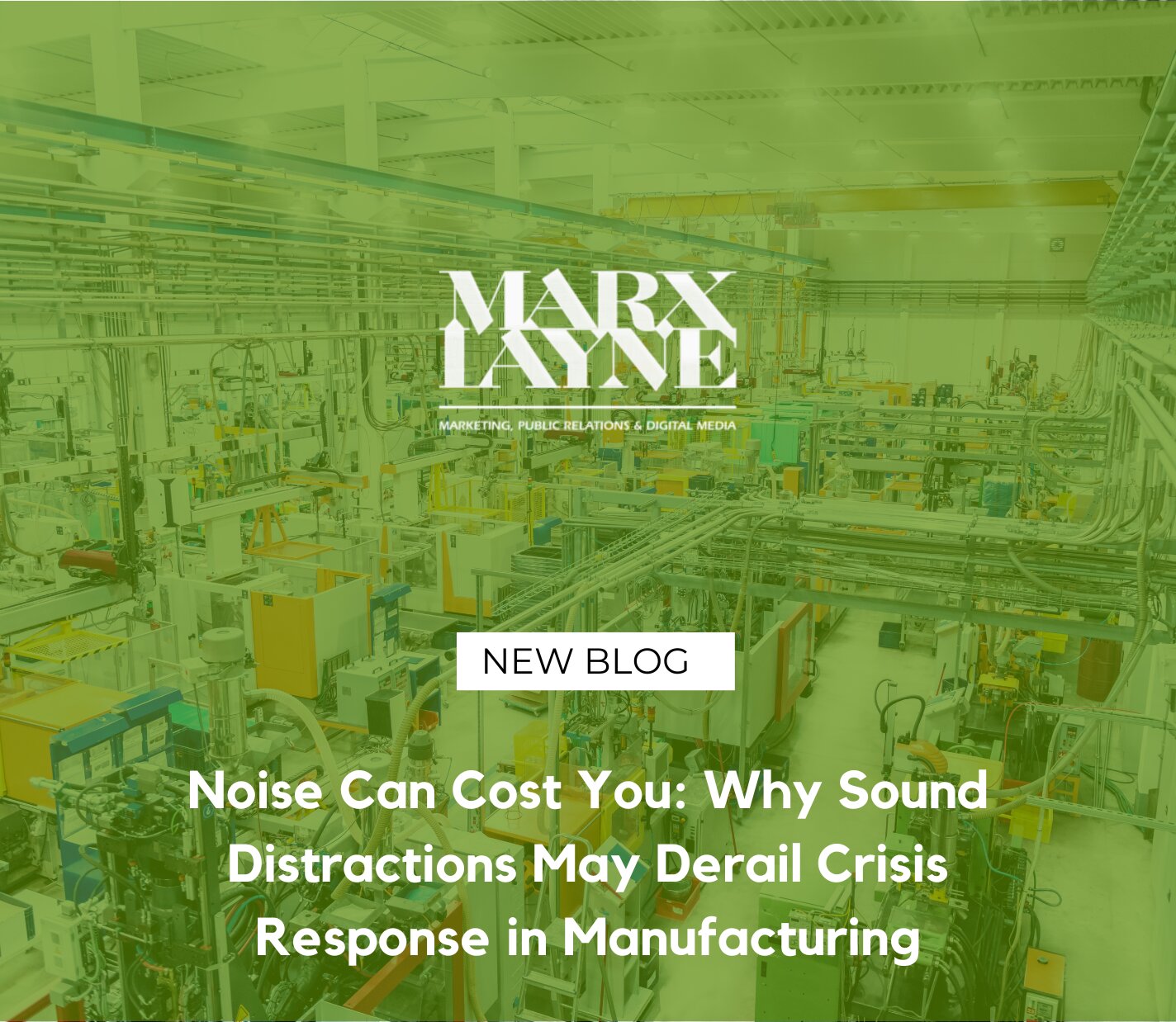
July 25, 2025
Noise Can Cost You: Why Sound Distractions May Derail Crisis Response in Manufacturing
In high-pressure manufacturing environments, decision-making during a crisis is already complex — but new research from Yale University shows that unexpected sounds can chemically influence the brain and push leaders toward riskier choices. In this eye-opening piece, Mike Szudarek explores how everyday noise on the plant floor can disrupt crisis response and what simple, practical steps manufacturing teams can take to reduce cognitive overload and stay focused when it matters most.
By Mike Szudarek
In a high-stakes manufacturing crisis (product defect, labor disruption, cybersecurity breach) every second matters. You train your teams, build decision trees, run simulations, and brief the plant managers. But what if something as small as an unexpected sound could nudge your people toward a riskier decision?
That’s exactly what a new Yale University study published in Nature Communications ( https://www.nature.com/articles/s41467-024-51729-4 ) suggests. The research found that surprising, unrelated sounds can trigger short dopamine bursts in the brain, increasing the likelihood of risky behavior and impulsive decision-making. In their experiments, participants exposed to rare audio cues were four percent more likely to take riskier options, and more likely to reverse course from their previous decision.
It’s a discovery that might sound like casino psychology. But in the real world of manufacturing, where chaos, noise, and pressure are the norm, the implications are profound.
Crisis Communication Isn’t Immune to Human Biology
In most production facilities, plant managers are making real-time decisions surrounded by distractions — pallet jacks beeping, alarms chirping, PA systems activating, all while texts and alerts flood their phones.
The Yale study shows these sounds don’t just distract — they change the chemical balance in the brain at the moment of decision-making, nudging leaders to take chances or pivot from plans. That’s exactly the opposite of what a disciplined crisis response demands. When a supply chain breaks down or a safety incident occurs on the floor, you need your people following protocol, not letting subconscious cues steer them into reactive or inconsistent messaging.
Manufacturing Plants: A Perfect Storm for Cognitive Disruption
Unlike offices where leaders can retreat to a boardroom, most key decisions in a manufacturing crisis are made on the floor or in the control room, often amid noise that would fail a stress test. This environment, especially during a crisis, becomes a neurological minefield. The Yale findings validate something many communicators already sense: stress and noise degrade the quality of leadership thinking, even among highly trained teams. But now, we have data that shows why it happens, and more importantly, how to start mitigating it.
What Manufacturing Comms and Plant Leaders Should Do
This isn’t about turning off every noise source on the floor. It’s about recognizing how cognitive performance is vulnerable to environment and designing crisis response with that in mind. And the fix doesn’t have to be complicated or expensive. Here are four easy steps you can take right now to keep crisis response focused and calm, even in a loud environment.
1. Pick a Quiet Room for Crisis Discussions
You don’t need to build anything. Just identify an existing office or meeting room away from the plant floor that can serve as a quiet space when something goes wrong. When a serious issue happens, bring your core decision-makers there so they can think clearly without distractions.
2. Remind Teams That Noise Can Impact Judgment
Include a short note in your next team meeting or training: “Unexpected sounds can influence decision-making and lead to riskier choices. Be aware of your environment during stressful moments.” This simple awareness can help plant leaders and communicators pause and think before reacting.
3. Stick to Your Plan
During a crisis, it’s tempting to second-guess yourself. But it’s important to trust your protocols. Don’t let noise or pressure pull you off course. Keep printed copies of your crisis response plan handy so everyone can stay on the same page — literally.
4. Cut the Noise During Drills
Next time you run a safety or crisis drill, take note of what people are hearing. Are there unnecessary alarms, radio chatter, or background noise that could confuse things? If so, work with your team to simplify or silence non-essential sounds during real events.
Bottom line: You don’t need new equipment or consultants to apply this research. A little awareness, a quieter room, and a disciplined plan can go a long way in helping your people make better decisions, especially when it matters most. Sometimes it’s not the crisis that causes chaos, it’s how noise sneaks into the decision-making process. By acknowledging and designing around that vulnerability, we can help leadership teams make better, calmer, and more consistent choices, regardless of what alarms are going off in the background.
Share This Story, Choose Your Platform!
Marx Layne is your competitive advantage.
Your reputation and success are our only concerns.
